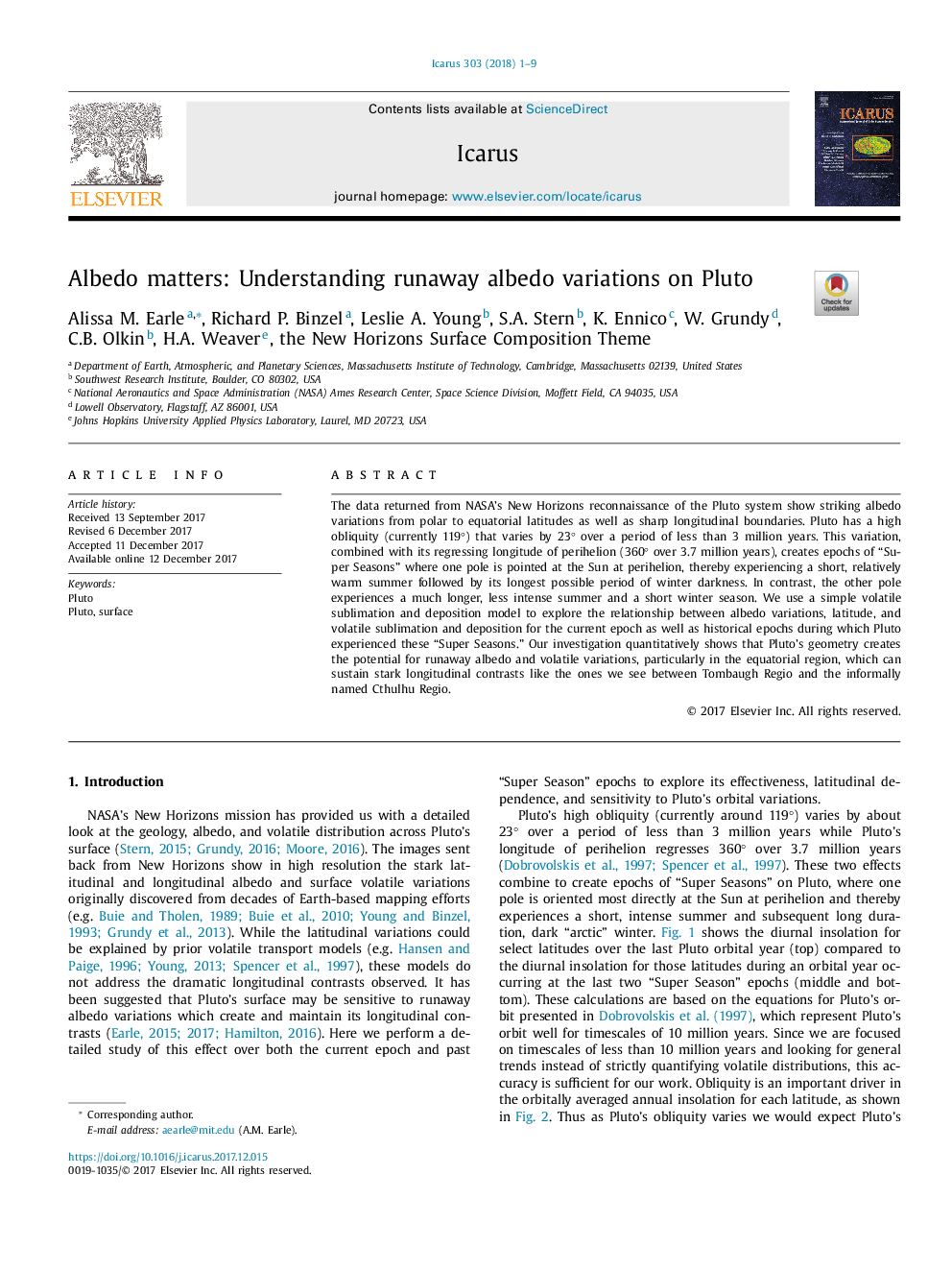| Article ID | Journal | Published Year | Pages | File Type |
|---|---|---|---|---|
| 8134392 | Icarus | 2018 | 9 Pages |
Abstract
The data returned from NASA's New Horizons reconnaissance of the Pluto system show striking albedo variations from polar to equatorial latitudes as well as sharp longitudinal boundaries. Pluto has a high obliquity (currently 119°) that varies by 23° over a period of less than 3 million years. This variation, combined with its regressing longitude of perihelion (360° over 3.7 million years), creates epochs of “Super Seasons” where one pole is pointed at the Sun at perihelion, thereby experiencing a short, relatively warm summer followed by its longest possible period of winter darkness. In contrast, the other pole experiences a much longer, less intense summer and a short winter season. We use a simple volatile sublimation and deposition model to explore the relationship between albedo variations, latitude, and volatile sublimation and deposition for the current epoch as well as historical epochs during which Pluto experienced these “Super Seasons.” Our investigation quantitatively shows that Pluto's geometry creates the potential for runaway albedo and volatile variations, particularly in the equatorial region, which can sustain stark longitudinal contrasts like the ones we see between Tombaugh Regio and the informally named Cthulhu Regio.
Keywords
Related Topics
Physical Sciences and Engineering
Earth and Planetary Sciences
Space and Planetary Science
Authors
Alissa M. Earle, Richard P. Binzel, Leslie A. Young, S.A. Stern, K. Ennico, W. Grundy, C.B. Olkin, H.A. Weaver, the New Horizons Surface Composition Theme the New Horizons Surface Composition Theme,
